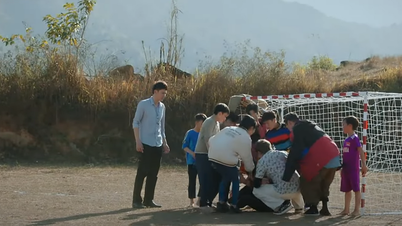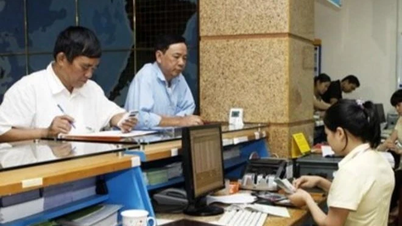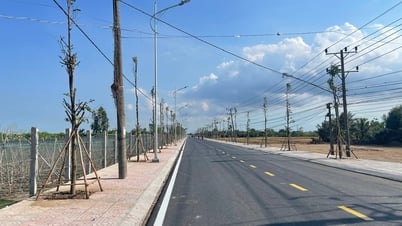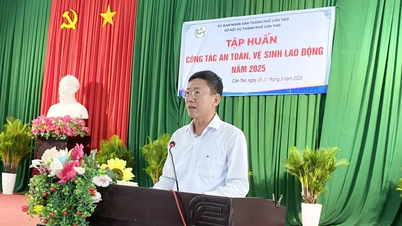In the context of the film industry trying to affirm its position on the regional and international map, the birth of the first 3D animated film in theaters, “Trang Quynh nhi: The Legend of Kim Nguu” is an important milestone, opening up many new development opportunities for the domestic animation industry - a field that was once considered quiet and inferior to other film genres.
What is noteworthy in this first-ever Vietnamese animated film project is that the director and crew have revived a rich treasure trove of folk culture that has long been thought to be forgotten or only exploited fragmentarily and sporadically.
Untangling the inherent knots of animation
From the legend of the Golden Buffalo in West Lake (Hanoi), interwoven with the legend of Kim Nguu Pagoda in Bac Ninh, the film “Trang Quynh nhi: Kim Nguu legend” has expanded the space and cultural depth by recalling “Linh Nam chich quai” - a treasure trove of stories about monsters, heroes and battles with Vietnamese mythological colors. This is a strategic choice: instead of creating a completely imaginary world , the director has created a rooted one, helping the audience easily connect and feel proud.
The unique point is that the film does not “illustrate” folklore but actually tells folk stories through language, characters, and settings. The audience will encounter the ancient Khoai village with its banyan tree, well, communal house yard, etc. typical of the Northern countryside; the traditional costumes of the four-panel dress, the skirt, the turban, etc. evoke many memories and nostalgia. Trang Quynh, a familiar image in folklore, is built into a smart, mischievous, and courageous child character.
The folklore in “Trang Quynh nhi: The Legend of Kim Nguu” is not confined to the old, but has been breathed into modern life through the language of 3D cinema with vividness, smooth effects, bright colors, and elaborate action staging. The scenes of chasing and fighting evil forces create drama, sharply conveying the fighting spirit, and unity to overcome difficulties - the core values of ancient folk tales.
Thanks to that, the film not only attracts children with its magical colors, but also touches the emotions of adults - audiences who want to find their cultural roots in a fresh format. This is how director - Meritorious Artist Trinh Lam Tung expresses the idea of integration through identity, turning traditional culture into a "foundation" to develop modern works, conquer the domestic market, and gradually approach the international market.
The use of advanced 3D technology, combined with a multi-channel distribution platform (cinema and digital) and the cooperation of Galaxy Studio shows a strategic direction to turn Vietnamese animation from a domestic art product into a cultural work that can be "exported".
According to film experts, the Vietnamese animation industry still operates mainly in a “spontaneous” manner, with most talented artists forced to work for international studios to make a living, while domestic projects often lack the funding, human resources and time to develop properly… Meanwhile, the industry has a pool of talented young artists, many of whom have participated in international blockbusters (Netflix, Disney, Nickelodeon…).
Another notable issue is the lack of proper training and remuneration. Many animation studios operate on a small scale, are experimental, or depend on unstable funding sources; there is no specialized school large enough to train all three important pillars: screenwriter, director, and technician, causing the production process to often be “learned from” abroad or “patched together”, lacking consistency in storytelling and staging. This leads to a common phenomenon: ideas exist but not enough strength to develop into a complete product.
In reality, a film like “Trang Quynh nhi: Truyen thuy Kim Nguu”, although praised for its rich identity and effort, is still the result of great sacrifice from a small group of artists, not the product of the entire industrial machine. The small number of excellent domestic animated works are almost a single journey, lacking support mechanisms from the State, businesses or the consumer community. Meanwhile, in countries with strong animation industries, such as Japan, Korea or the US, each film is the crystallization of a closed value chain, fromeducation , creativity, technology to communication and commercialization. Without a “professional support ecosystem”, all current efforts may just be an effort to survive, not enough to create a sustainable creative industry.
An equally important issue is the perception of the audience and the domestic market. If consumers do not consider animation a serious field but only a product for “children to watch”, investment in this industry will remain small. In that context, the birth of a 3D animated film “made in Vietnam” can be seen as a “push”, and also a reminder that it is time to re-evaluate the role of animation in the overall national culture and creativity.
Must take the audience as the "core"
People's Artist Pham Ngoc Tuan - who has more than 35 years of experience in the animation industry, emphasized: The fact that Vietnamese animated films are starting to conquer the big screen is a good sign, marking an important step forward in the journey of integration and development. However, behind that joy are countless pressures that those in the profession have to face.
First of all, the script needs to be truly new, attractive, and creative; it cannot continue to repeat old motifs, only illustrate fairy tales or retell historical figures in a dry documentary style; it needs to have depth, a clear message, be rich in emotions and reflect the breath of the times; it must be equally creative in terms of technology, and be equipped with a modern equipment system. With an average production cost of about 20 billion VND for a film and will be much higher if complex technology is applied, this is a difficult problem for domestic animation businesses, especially small and medium-sized film studios.
In addition, experts say that the world is currently experiencing a “thirst” for local content. Platforms such as Netflix, Disney, Amazon Prime, etc. are continuously expanding their catalog of animated films from Asia, Africa, South America, etc., realizing that audiences want to watch good films and explore the world through the cultures of other regions. This creates a clear opportunity for Vietnamese animation if it invests seriously and strategically in content that has cultural roots and is produced with global technical standards.
Director Trinh Lam Tung emphasized: If animation wants to develop sustainably, the audience must first be the core. If it does not create real enjoyment value for the audience, the work will be difficult to last, and it cannot be the foundation for a solid industry. Therefore, building a mutual, professional, and strong relationship between filmmakers and viewers is vital. Each film is an opportunity to listen and learn from the audience. Film screenings, direct exchanges, and candid comments are valuable sources of data that help professionals adjust and innovate in the most practical way.
In order for domestic animation to escape the fragmented, stagnant state, and to survive on outsourced orders, a comprehensive, cross-industry, and long-term strategy is needed, from human resource training, capital investment, copyright policy reform, etc. to building a post-production value chain such as distribution, image commercialization, cultural, educational, and tourism linkages.
In the context of countries around the world promoting the export of “soft culture” through cinema, including animation, Vietnam cannot stay out of the game when possessing a rich and unique treasure trove of myths and folklore, along with a talented young generation in the fields of design, technology, and visual arts. Products such as “Trang Quynh nhi: The Legend of Kim Nguu” if further developed with a solid script system, synchronized effects, professional sound and image design, etc. can completely become typical representatives of the Vietnamese animation brand.
Source: https://nhandan.vn/co-hoi-cho-phim-hoat-hinh-3d-viet-nam-post881423.html


![[Photo] General Secretary To Lam chairs a working session with the Central Internal Affairs Commission](https://vphoto.vietnam.vn/thumb/1200x675/vietnam/resource/IMAGE/2025/5/22/3b7790f499da45b2803d8ae253207ef1)
![[Photo] Prime Minister Pham Minh Chinh chairs meeting on draft Resolution of National Assembly on International Financial Center in Vietnam](https://vphoto.vietnam.vn/thumb/1200x675/vietnam/resource/IMAGE/2025/5/22/d398664ff1a140629169ea5a24e1b4d0)
![[Photo] Press delegation meeting to visit Truong Sa and DK1 Platform](https://vphoto.vietnam.vn/thumb/1200x675/vietnam/resource/IMAGE/2025/5/22/6b8d232877ec421a9e8187d83b9f8006)
![[Photo] Prime Minister Pham Minh Chinh chairs the Government's special meeting on law-making in May](https://vphoto.vietnam.vn/thumb/1200x675/vietnam/resource/IMAGE/2025/5/22/1c880aae96fd4e0894abc47a46fe19ba)


















![[Photo] Prime Minister Pham Minh Chinh chairs meeting on draft Resolution of National Assembly on International Financial Center in Vietnam](https://vphoto.vietnam.vn/thumb/402x226/vietnam/resource/IMAGE/2025/5/22/d398664ff1a140629169ea5a24e1b4d0)
![[Photo] Press delegation meeting to visit Truong Sa and DK1 Platform](https://vphoto.vietnam.vn/thumb/402x226/vietnam/resource/IMAGE/2025/5/22/6b8d232877ec421a9e8187d83b9f8006)

























































![[Podcast] Week introducing more than 500 OCOP products in Hanoi](https://vphoto.vietnam.vn/thumb/402x226/vietnam/resource/IMAGE/2025/5/22/d144aac2416744718388dbae3260e7fd)






Comment (0)